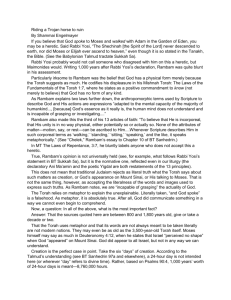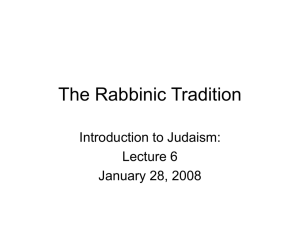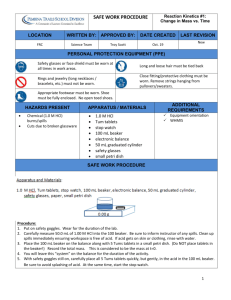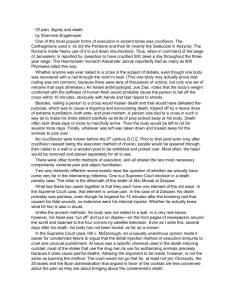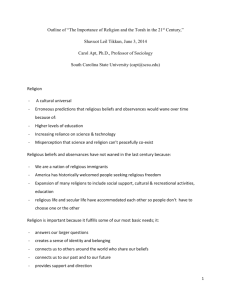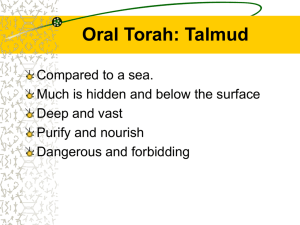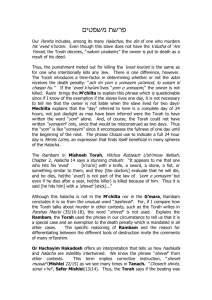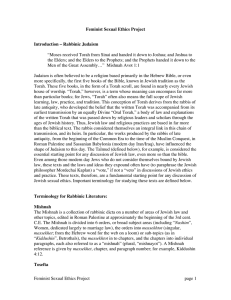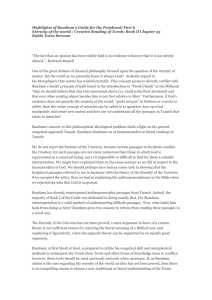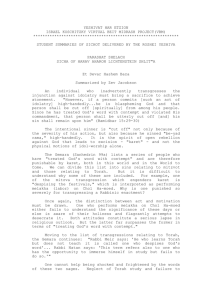Introduction to Rabbinic Literature
advertisement
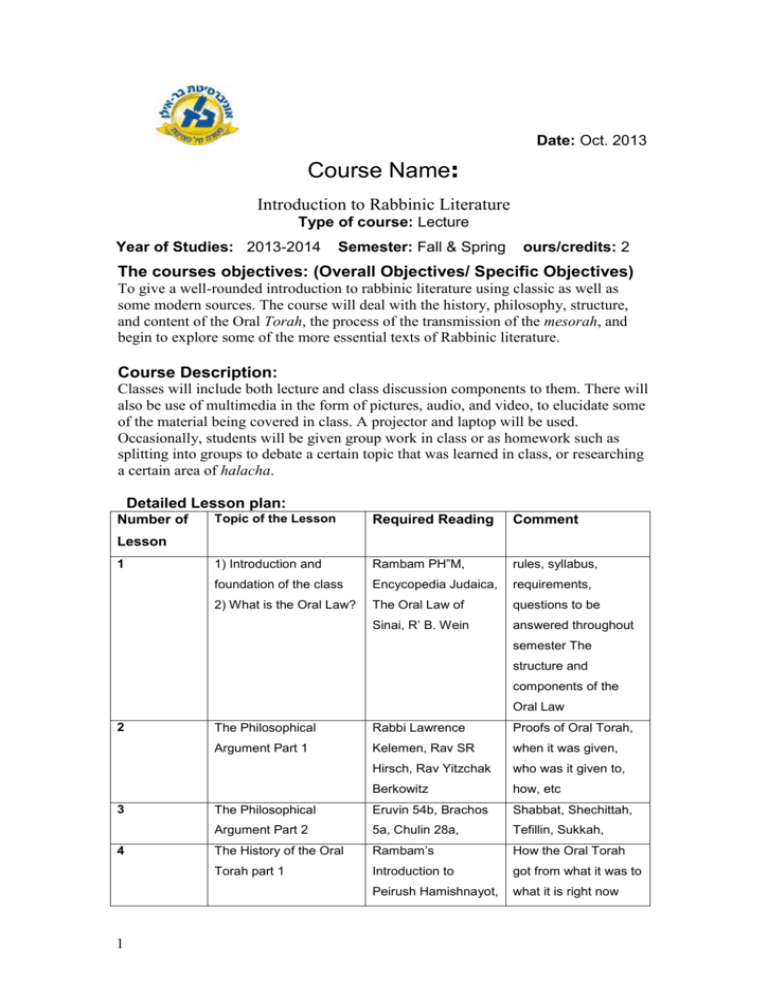
Date: Oct. 2013 Course Name: Introduction to Rabbinic Literature Type of course: Lecture Year of Studies: 2013-2014 Semester: Fall & Spring ours/credits: 2 The courses objectives: (Overall Objectives/ Specific Objectives) To give a well-rounded introduction to rabbinic literature using classic as well as some modern sources. The course will deal with the history, philosophy, structure, and content of the Oral Torah, the process of the transmission of the mesorah, and begin to explore some of the more essential texts of Rabbinic literature. Course Description: Classes will include both lecture and class discussion components to them. There will also be use of multimedia in the form of pictures, audio, and video, to elucidate some of the material being covered in class. A projector and laptop will be used. Occasionally, students will be given group work in class or as homework such as splitting into groups to debate a certain topic that was learned in class, or researching a certain area of halacha. Detailed Lesson plan: Number of Topic of the Lesson Required Reading Comment 1) Introduction and Rambam PH”M, rules, syllabus, foundation of the class Encycopedia Judaica, requirements, 2) What is the Oral Law? The Oral Law of questions to be Sinai, R’ B. Wein answered throughout Lesson 1 semester The structure and components of the Oral Law 2 3 4 1 The Philosophical Rabbi Lawrence Proofs of Oral Torah, Argument Part 1 Kelemen, Rav SR when it was given, Hirsch, Rav Yitzchak who was it given to, Berkowitz how, etc The Philosophical Eruvin 54b, Brachos Shabbat, Shechittah, Argument Part 2 5a, Chulin 28a, Tefillin, Sukkah, The History of the Oral Rambam’s How the Oral Torah Torah part 1 Introduction to got from what it was to Peirush Hamishnayot, what it is right now Gateway to the Talmud, 5 The History of the Oral Iggeres R’ Sherirah Tracing the Torah part 2 Gaon, Yesod generations of the Hamishnah of Rav mesorah and the Margolios historical significance of each. 6 Midterm 7 The 4 Parts of the Oral Texts of Mishnah, An inside look at the Law: Mishnah, Gemarah, Gemarah, Tosefta, texts Tosefta, Medrash Medrash Halacha Halacha 8 Mishnah Vs. Gemarah Mevoh Hatalmud, Rabbi Berger, 9 Rishonim Rashi, Tosfos, History, Structure, Rambam, Ramban, Purpose of Rishonaic Ran, Rosh, Rif, Literature Ritvah, Rashbah 10 11 Acharonim Shulchan Aruch, History, Structure, Ramah, Nosei Keilim, Purpose of Modern Poskim Acharonaic Literature Review Course requirements: Full Attendance, note taking, participation in group and individual assignments and activities, Requirements/ Assignment/Tasks: 1 Test, 1 Midterm, 1 research assignment, Final Grade Components (Number grade or pass/fail): Number grade (Required/ Elective): Rambam Hakdamah L’peirush Hamishnayos; Mevo L’talmud, Rav Berger; Yesod Hamishnah, Rav Reuven Margolios; R’ Hirsch’s commentary to the Torah; Iggeres Rav Sherirah Gaon; Permission to Believe, Permission to Receive, Rabbi Lawrence Kelemen; Classic texts such as Mishnah, Gemarah, Shulchan Aruch, and commentaries, Hatorah V’hamesorah L’shitas Harambam, Rav kahanah; Bibliography: Required textbooks, other textbooks: Handouts, materials to be sent electronically to students Required material for the final: class notes, readings from in class and from homework 2
